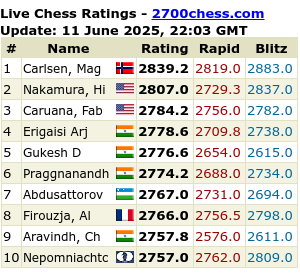From a reader:
I trust your judgment and I would like to know if it is ok to own a miniature monstrance. Sites online sell them. [Image attached for reference.] It’s a miniature monstrance which is not the same as one used in Mass.
Most of these small "monstrances" are really reliquaries. They are "monstrances" insofar as they "show" relics, but they are not monstrances for display and adoration of the Sacred Host, more technically an ostensorium. The terms for these sacred vessels come from words "to show".
Nevertheless, it would not be "bad" to own a large monstrance for a Host. Of course you could not use it privately for displaying a Host for adoration except with the permission of the local bishop, who could authorize a private chapel with reservation of the Blessed Sacrament.
There is also the question of the consecrated nature of this sacred vessel. A monstrance is a sacred vessel. The traditional view of sacred vessels is that they should be touched only by hands which have also been consecrated to handle sacred things, such as the Host Itself and the vessels which contain the Eucharist. The implication is, of course, if your hands are not consecrated, as those of a priest, then you should not handle a monstrance except in great need. However, were a sacred vessel to be sold it would lose its consecrated character. It would be "desecrated". It would need to be re-blessed.
So, it is not "bad" for people to own these vessels, but great care must be exercised in their regard that they be treated with due reverence.




























I believe that there are several vendors that offer miniature “monstrances” that depict an exposed Host. These seem to be something like an “icon” or reminder of an Exposition of the Blessed Sacrament.
Maybe it would be a better idea to purchase something like that rather than an empty reliquary or ostensorium.
I would be a mistake to have anything that could be mistaken as the real thing, such imitations merely cause confusion and misunderstanding, much better to get a proper reliquary with real relics.
Along those same lines, what about owning a thurible and burning incense in your home? I see home incense kits advertised and wonder about the appropriateness of it.
Some people use incense to accompany prayer at a home altar, most likely using a hand censer. In the east, it is traditional for families to have icons and pray in front of them daily and incense them daily.
I have to disagree with Leonius that it may indeed be efficacious to set up an altar with an “icon” of an ostensorium (or some other beneficial image) accompanied by a bit of incense in the home for private prayer.
I am, of course, not suggesting that such a setup be considered equivalent, in some way, to praying in a chapel before the Real Presence. Just that it seems a convenient way to recall the real Altar and Sacrament in the home; an analogy–if you will–of bringing the liturgical action into your daily life.
BTW… FWIW…. FYI… When people start a comment with “This is off topic, but…” I will very often just delete it. There is usually nothing wrong with the comment by itself other than the fact that it is off topic.
A rose can be a weed when it is in the wrong place!
I was under the impression that the ostensorium / monstrance was not blessed / consecrated, but rather that the luna / lunette was, as that alone touched the Blessed Sacrament.
Back in the 1960s, Conservative author and Catholic convert Russell Kirk found a monstrance in the local parish’s trash. Dr. Kirk retrieved the monstrance and took it home. Some years later, the pastor wanted to revive Exposition and Benediction, and approached Dr. Kirk about getting the monstrance back. Dr. Kirk leased the monstrance back to the parish, with the proviso that if the church ever wanted to get rid of it again, the monstrance would be returned to Dr. Kirk.
Seems an appropriate case of lay ownership of a sacred vessel to me.
“The traditional view of sacred vessels is that they should be touched only by hands which have also been consecrated to handle sacred things, such as the Host Itself and the vessels which contain the Eucharist.”
Which isn’t a terribly consistent view. Really, handling sacred vessels should be limited to clerics, but not necessarily only those with consecrated hands.
Deacons’ hands aren’t consecrated, after all, yet they are the ordinary minister of the Chalice.
Only consecrated things should touch the Sacred Species themselves, but non-consecrated things can touch those consecrated things. Otherwise we’d need an infinite regress of consecrated things. One layer is sufficient. It’s like…Jesus Himself was carried by someone who was Immaculately Conceived…but SHE didn’t need to have a line of Immaculate mothers ad infinitum back to Eve…
Generally, I’d say, the ideal is for the transubstantiated Species themselves only to touch consecrated vessels, and only for clerics to touch those vessels in turn. But the clerics need not be only those with consecrated hands. Deacons may certainly touch the vessels even though their hands aren’t consecrated. For this very reason, traditionally they were supposed to minister the chalice only, not the host.
As Aquinas says, “The deacon, as being nigh to the priestly order, has a certain share in the latter’s duties, so that he may dispense the blood; but not the body, except in case of necessity, at the bidding of a bishop or of a priest. First of all, because Christ’s blood is contained in a vessel, hence there is no need for it to be touched by the dispenser, as Christ’s body is touched.”
“the local bishop, who could authorize a private chapel with reservation of the Blessed Sacrament”
Does this happen frequently? Does anyone have experience with this?
The reason that I ask is, living in rural Arizona, there are places where a private chapel might be the only chance for someone to experience prolonged adoration. It’s nearly impossiable for some folks to make it into a town on a regular basis for adoration. I can see the risks associated with allowing the Blessed Sacrament to be removed from a parish. But I can also see the benefit.
I don’t think any priest or Bishop would leave the blessed sacrament in a private chapel unless there was grwat trust. [Ummmmm, yes. Indeed.] I always thought it was illegal cannonically to leave the blessed sacrament in a private individuals home/chapel? [Again, with the permission of the bishop it can be done.]
I know a family in a remote house (15 km from the nearest village)in the French
Alps who was bestowed forever by Pope Pius VII the amazing privilege of keeping the Holy
Sacrament in a monstrance in “chapel” inside their home.
This privilege once was questioned by the local bishop. This family could provide officil documents from the Vatican and the bishop agreed because in fact their ancestor could help Pope Pius VII to forward out secret messages when he was held as a prisoner by Napoleon.
I am afraid they can proceed so for a long time since their father died 10 years ago and all the children no longer stay at home and their mother is an old sick lady.
“However, were a sacred vessel to be sold it would lose its consecrated character. It would be “desecrated”.”
This is interesting. I had always wondered. So when a consecrated church property is sold it is also desecrated? I had always wondered if it was possible, or rather, correct to ever sell a consecrated thing since it seems like it belongs to God after being consecrated. I suppose it falls in the category of “it shouldn’t ever happen but someone of authority such as a Bishop can.” Would this be correct?
What about simply Blessed things? If you sold a blessed rosary without the intention of selling the blessing but only the object, would it loose its blessed nature?
What about Altar Servers who are assisting a priest by putting the Monstrance on the Altar? I am currently Altar Serving and have to put up the Monstrance before our Eucharistic Holy Hour. Is this allowed?